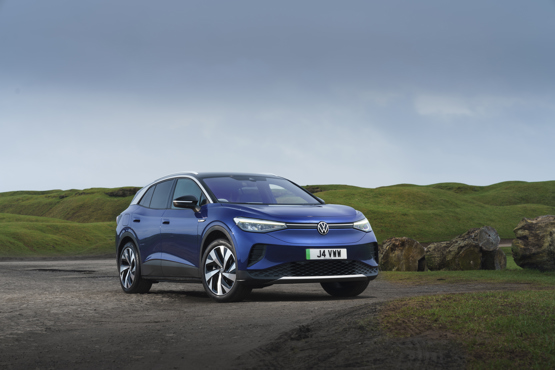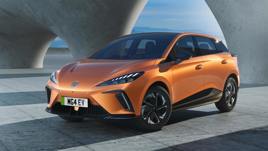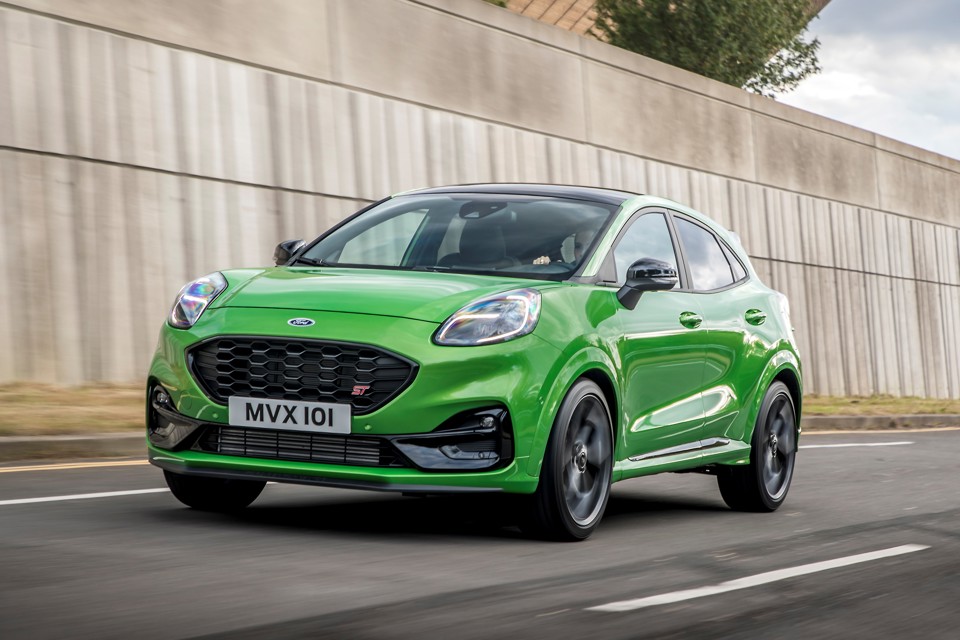In his latest automotive retail sector analysis for AM magazine David Francis delved into the strength of the Volkswagen range, Toyota's electric car conundrum and considered whether premium SUVs might be running out of road.
Following on from the Society of Motor Manufacturers and Traders (SMMT) publication of September's new car registrations data, AM Online takes a look back at the key trends that shaped the market during August.
The only good news in August was that the market did not get any worse.
In his latest automotive retail sector analysis for AM magazine David Francis delved into the strength of the Volkswagen range, Toyota's electric car conundrum and considered whether premium SUVs might be running out of road.
Following on from the Society of Motor Manufacturers and Traders (SMMT) publication of September's new car registrations data, AM Online takes a look back at the key trends that shaped the market during August.
The only good news in August was that the market did not get any worse.
Registrations were up by 1.2%, but the monthly figure of 68,858 was the second-lowest since 2013 – only pandemic-hit 2021 was lower.
Among the manufacturers, Ford maintained its narrow lead year-to-date (YTD – just 867 units) over Volkswagen.
The Puma (the UK’s second bestselling model overall YTD) and the Kuga (No 8 overall YTD) are both out-performing the market.
However, the Fiesta is down by 52.9%, and is being outsold by the Toyota Yaris, while the Focus is down by 29.7%; Focus registrations are now 40% below those of the Golf.
VW owes its strong sales performance to the sheer breadth of its range, rather than any one model.
ONE VW IN TOP 10
In the 1980s and early 1990s, VW was, effectively, the Golf car company, with more than half of its UK sales coming from one model.
Today, the Golf is the only VW model in the YTD Top 10 – and Volkswagen outsold Ford in August with its raft of significant sellers and no single ‘hero’ model that is in a relatively lowly eighth position.
However, VW has nine separate models that could be considered significant sellers: i.e. with YTD sales in excess of 2,000.
Of course, the big question for VW is how well its pivot to battery electric vehicles (BEVs) is going. Here the jury is still out.
The ID3/ID4/ID5 range is doing reasonable business, but has yet to set the world alight.
 The ID3 (6,200 registrations YTD) is the third best-selling BEV after the Tesla Model Y and Model 3, while the ID4and ID 5 are both bunched with a large number of other BEVs, such as the Ford Mustang Mach E and
The ID3 (6,200 registrations YTD) is the third best-selling BEV after the Tesla Model Y and Model 3, while the ID4and ID 5 are both bunched with a large number of other BEVs, such as the Ford Mustang Mach E and
Kia EV6 on approximately 3,000 registrations YTD.
VW has quite a lot of ground to make up if it is going to meet its target of catching Tesla by 2025.
Kia is in third place, with strong sales across the whole model range. While Kia is now known for doing well in growing segments such as crossovers and BEVs, the star performer is, counter-intuitively, the Ceed C-segment hatchback.
It has grown by 81.1% this year, and has overtaken the Ford Focus for fifth position in the segment.
Just behind Kia, Audi and BMW are continuing their close race.
Last year, Audi finished only 1,400 units ahead of BMW, and this year is also looking like it will go down to the wire.
One curiosity of the BMW registration figures is that its heartland car for more than 30 years, the 3 Series, is down by 48.5% YTD, but the 4 Series (descended from the old 3 Series Coupé) is up by 64.2%.
In August, the 4 Series was the bigger seller, and the two models could finish the year on similar numbers.
In a strong sixth place is Toyota. The Yaris, Yaris Cross, C-HR and Corolla are all doing well, while the Aygo X is doing a good job of proving that city cars are still viable, despite the withdrawal of Ford, Vauxhall, VW and others from the segment.
Toyota’s big issue because it has been so focused on hybrids, it is only just launching its first BEV – the bZ4X.
With BEVs now taking 14% of the market, Toyota has quite a lot of catching up to do.
HYBRID THEORY CONCERNS
Meanwhile, Toyota is continuing to express serious concern to the British Government about the 2030 ban on petrol engines. In 2020, the Government said that any hybrid would need to have a significant electric-only range, but has still to define the actual figure.
Toyota is warning that, if its UK-made hybrids do not meet the target, there will be no point manufacturing in the UK.
Toyota already has factories in France, the Czech Republic and Turkey, so it is not short of alternative locations.
Among the other mainstream manufacturers, the two most notable performances have come from MG and Dacia.
 MG has almost doubled market share from 1.6% to 3.0% YTD, and that is before the new MG4 has been launched; a VW ID3 rival with a starting price of £26K could do very well indeed.
MG has almost doubled market share from 1.6% to 3.0% YTD, and that is before the new MG4 has been launched; a VW ID3 rival with a starting price of £26K could do very well indeed.
There is no question that MG has increased sales on the merits of its vehicles, but there is a question about whether it has been less badly affected by the chip shortage than its rivals.
Auto Forecast Solutions, which monitors production figures, says that both Europe and North America will lose production of 1.3-1.4 million cars in 2022, but China will lose production of only 250,000 vehicles.
Once the chip shortage is over (second half of 2023 perhaps), it will be interesting to see if MG maintains its gains.
Given recent history, however, it may be prudent to assume that further crises will stop the market getting back to normal until well after that.
CROSSOVER SUCCESS
Dacia has increased share even faster than MG (up from 0.85% to 1.75%) and has a new model in the Jogger, with the larger Bigster to follow. Indeed, Renault’s one-time economy sub-brand may well overtake its parent by the end of this year.
YTD Dacia is only 500 units behind. If that happens, will Renault become Dacia’s sub-brand in the UK?
At a segment level, the best performing major segment has been superminis, which were down by only 2.8%.
Specifically, the strong result has come from the supermini crossover sub-segment, which actually rose by 14.8%.
In contrast, market share of premium and large crossovers (from Volvo XC40, through Hyundai Santa Fe to Bentley Bentayga) actually fell back slightly from 17.9% to 17.6%.
Having cannibalised sales of large and executive saloons for more than a decade, is the premium SUV running out of worlds to conquer?
Now attention turns to the hugely important September market, which will be the last chance to get some impetus for the remainder of 2022.
The current Society of Motor Manufacturers and Traders (SMMT) forecast for 2022 is 1.6 million, but YTD registrations are pointing towards a market of 1.5 million.
It will be the September results that show whether the market can recover enough to achieve the SMMT prediction.
Login to continue reading
Or register with AM-online to keep up to date with the latest UK automotive retail industry news and insight.















Login to comment
Comments
No comments have been made yet.